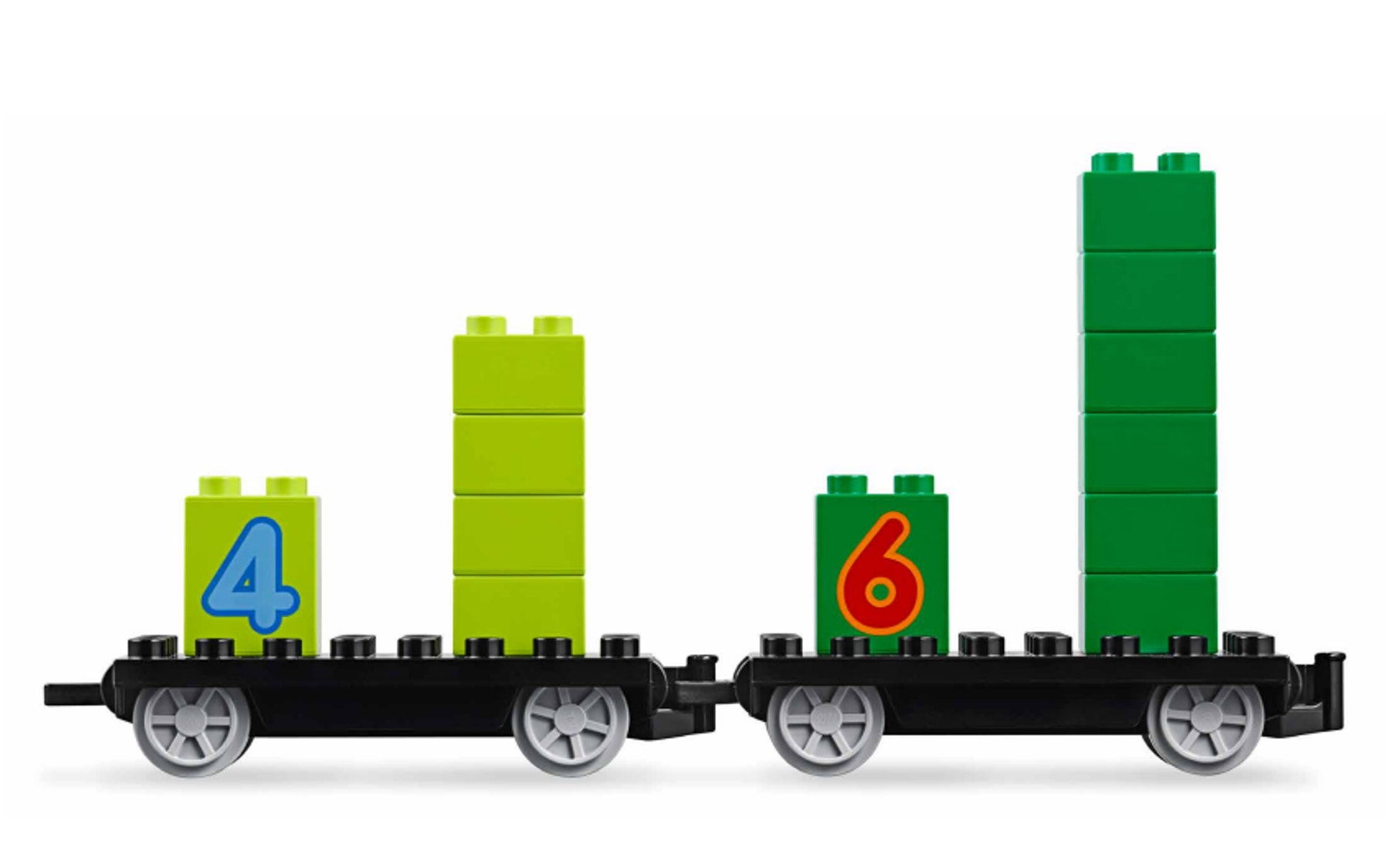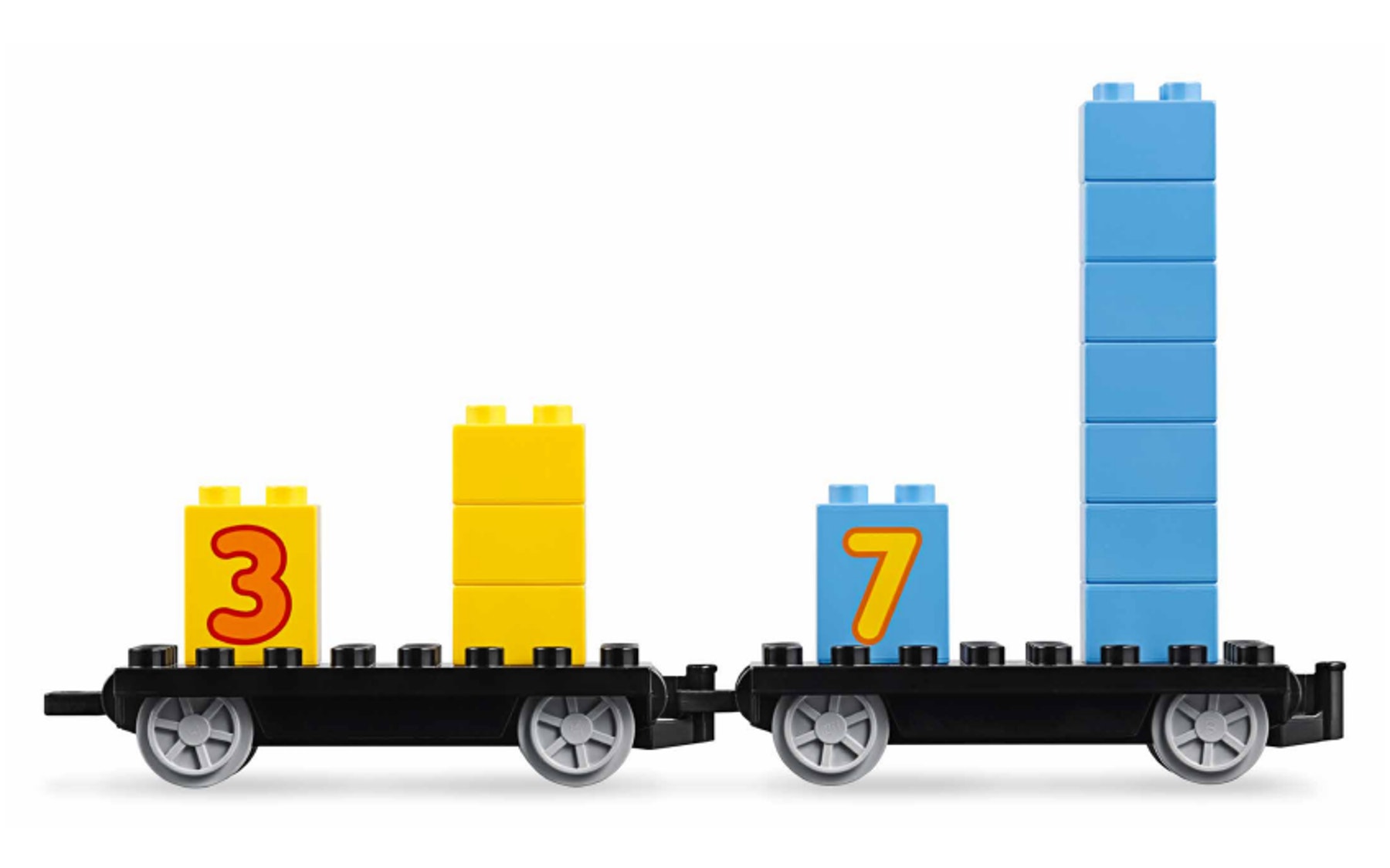Number Friends
In this lesson, children will learn to count and recognize the number of objects in a set, match numbers to quantities and practice simple addition

Connect
Gather the children around the train set and show them two train cars with different quantities of bricks loaded onto
them (e.g., one with six green bricks and the number six brick, and another with four light green bricks and the number four brick).Place the cars side by side and ask the children to compare.
Consider asking questions like:
- Which train car has the most bricks?
- Which train car has the least bricks?Explain that sometimes people want to know how many items there are altogether and that we can figure this out by adding.
Encourage the children to count the total number of bricks on both train cars. Point out that the two quantities (i.e., six and four) added together make ten, and
so we can call six and four best friends of ten!
Tip
If making sums of ten is too difficult, use smaller numbers.
Construct
Explain that several sets of numbers are “best friends of ten.”
Tell the children they will be working with a partner to create “best friends of ten” train cars.
Ask each pair of children to find two number bricks that add u p to ten. You may use the in-box card as an example.
Ask each child to place a number brick on a train car and find the corresponding
number of bricks in the same color. If they need help, show them the inspiration photos, which they can duplicate.Once the children have finished building, have them count the bricks on each train car.
Then ask them to count their pair’s bricks altogether--which make ten!


Contemplate
Facilitate a discussion about “best friends of ten.”
Consider asking questions like:
- How many sets of “best friends of ten” there are?
- What other numbers add up to ten?Write out the sets as children say them. If time allows, encourage the children to
build each set of “best friends” and share with the group.
Continue
Challenge children to create “best friends of twelve” train cars.
The combinations which can be built using the set include:
- Two and ten
- Three and nine
- Four and eight
- Five and sevenLook at the in-box cards and use the ideas shown on the cards to help the children find the bricks needed to add up to twelve.
Did you notice?
Observing the following skills can help you monitor whether the children are developing the necessary competencies in math.
Counting using number names, and beginning to recognize the number of objects in a set
Comparing two or more objects
Exploring simple operations, such as adding
Teacher Support
Children will:
- Count and recognize the number of objects in a set
- Match numbers to quantities
- Compare quantities
- Practice simple addition
For up to 4 children
The Mathematics guidelines from the National Association for the Education of Young Children (NAEYC) and HeadStart have been used to develop the Math Train lessons. Please refer to the learning grid for an overview of the learning values referenced throughout this Teacher Guide.
The learning goals listed at the end of each lesson can be used to determine whether or not each child is developing the relevant early math skills. These bullet points target specific skills or pieces of information that are practiced or presented during each lesson.




